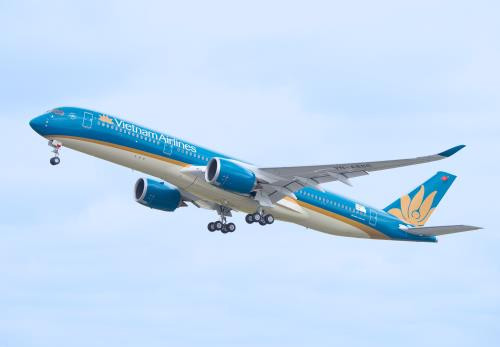 The aviation sector must solve the problem of hi-tech personnel shortage if it wants to achieve sustainable development in the years ahead (Illustrative photo: VNA)
The aviation sector must solve the problem of hi-tech personnel shortage if it wants to achieve sustainable development in the years ahead (Illustrative photo: VNA)Hanoi (VNA) – The aviation sector must solve theproblem of hi-tech personnel shortage if it wants to achieve sustainable developmentin the years ahead.
The International Aviation Transport Association ratedVietnam as one of the fastest growing markets in the past decade with anaverage revenue growth of 17.4 percent, double the 7.9 percent of Asia.
The flight networks of domestic airlines are also expandingrapidly with the presence of five players: Vietnam Airlines, Vietjet, Jetstar,Vasco and most recently Bamboo Airways. Those five and 71 international airlinesare operating 140 international routes connecting Vietnam with 28 countries andterritories.
Experts in the industry said some airlines expanded theirfleets and flight networks too fast compared to resources, resulting in ashortage of hi-tech and technical staff such as pilots and technicians.
Tran Quang Chau, chairman of the Vietnam Association onAviation Science and Technology, said training has not caught up withdevelopment, leading to personnel shortages not only in the contingent ofpilots but also in flight controllers, air traffic controllers, or aircraftengineers.
The country has only one pilot training school, the VietFlight Training school established in 2008, which graduates between 80-100pilots each year, not sufficient to meet demand.
Meanwhile, all airlines have high demand for pilots to meettheir development plans.
Vietnam Airlines, as an example, currently has nearly 1,200 pilots,but it will need 1,340 in 2020 and 1,570 in 2025.
Chau said the shortage of hi-tech personnel is partlyattributable to State management agencies. He said the State should have planson pilot training in accordance with the development of airlines, and suggestedthat the State may invest in a training facility and require airlines to payfor training.
Nguyen Huu Duc, a transport expert, said the State shouldconsider cooperating with foreign partners in personnel training for theaviation sector.-VNA




























